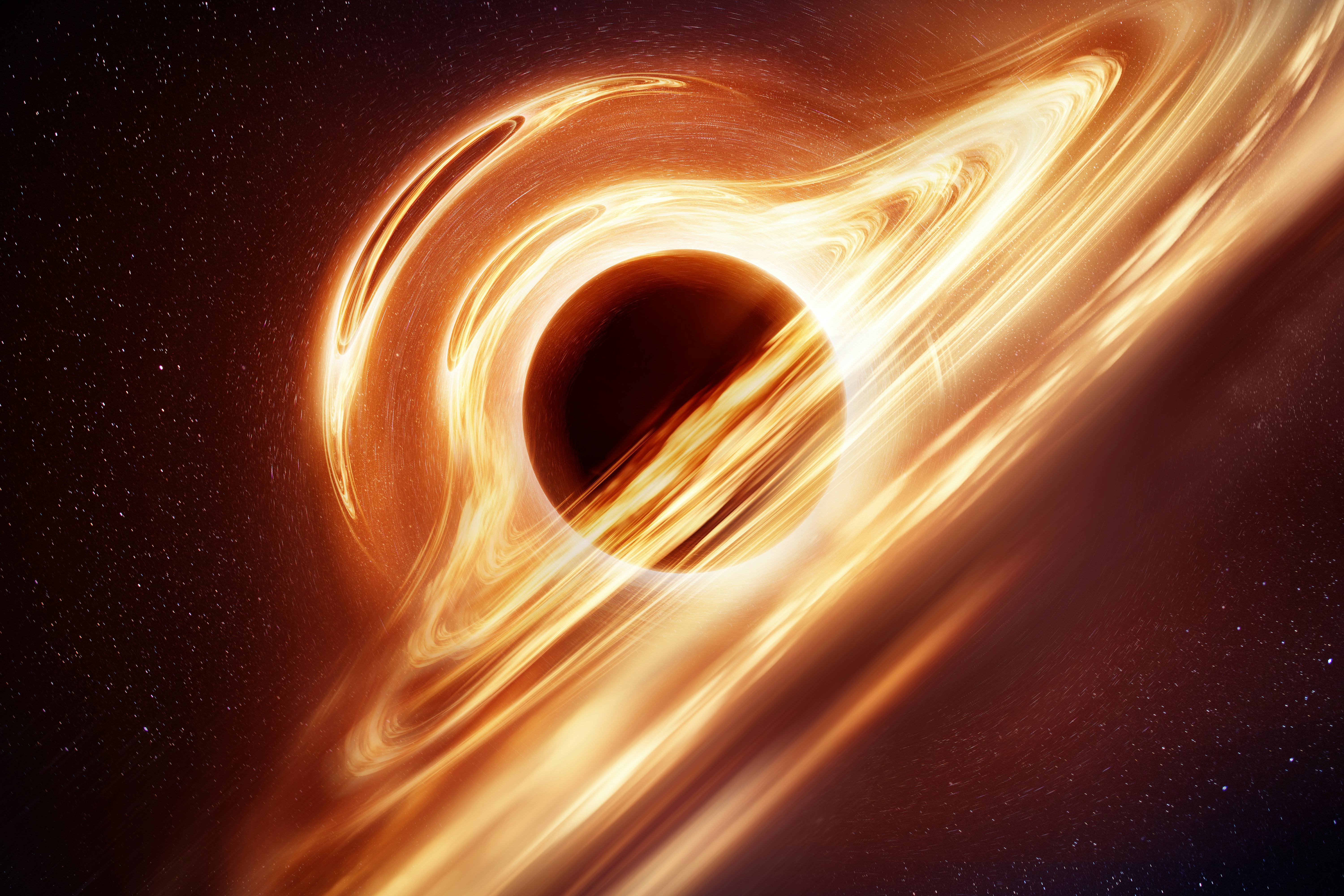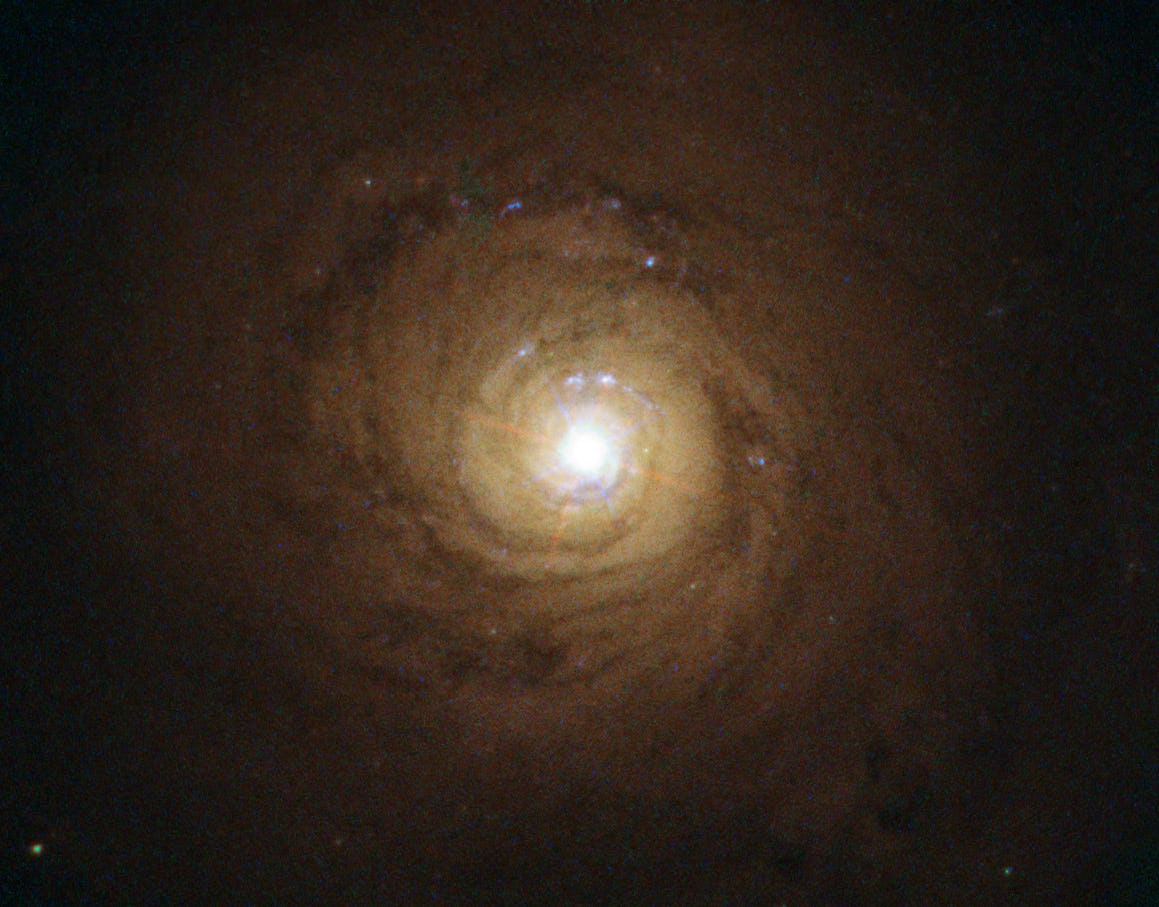
Active galactic nuclei — the bright, noisy cores of galaxies where supermassive black holes accrete huge quantities of matter — are the most luminous stable objects in the sky. But they may be far brighter and more energetic than astronomers have realized, a new paper in Monthly Notices of the Royal Astronomical Society argues.
Based on observations of one of the most closely analyzed active galactic nuclei, NGC 5548, the team behind the study find that the region around the nucleus is much dustier than astronomers have previously estimated – and that means active galactic nuclei may be putting out a dozen times more energy than anyone suspected.
WHAT’S NEW — NGC 5548 was one of the first active galaxies to be noticed by astronomers; 80 years ago, Carl Seyfert found they had much broader and more intense emission lines than other galaxies that might otherwise appear identical to the naked eye. Astronomers use a wide variety of spectra to understand the energies produced by active galactic nuclei, but because they are so bright, you might expect they would far outshine whatever dust swirls around them.
It turns out that this isn’t the case. “The far-ultraviolet light of a typical active galactic nucleus is dimmed by a large factor,” lead author C. Martin Gaskell said in a press release. This causes an issue known to astronomers as reddening: the energies of these massive black holes are reflected off tiny grains of dust in lower wavelengths, leading only the longer wavelengths — towards the redder end of the spectrum — to arrive here hundreds of millions of years later.
“When there are intervening small particles along our line of sight, this makes things behind them look dimmer. We see this at sunset on any clear day when the sun looks fainter,” Gaskell explains. In the same way the sun darkens and reddens as it settles low in the west, the incredible energies released by the immense black hole at the heart of NGC 5548 — a mere 65 million times more massive than the sun — are dimmed and reddened by the massive cloud of dust that accretes around it.

WHY IT MATTERS — Historically, astronomers have focused on correcting the reddening of active galactic nuclei by based on indicators from our own galaxy. But — luckily — our familiar Milky Way is not itself an active galaxy. The indicators the team focused on for NGC 5548 found that the dimming based on the dust around its accretion disk was almost fifteen times more intense than the process in our own galaxy.
Because most of a supermassive black hole’s energy is pumped out in the ultraviolet range, Gaskell says, this means that the typical active galactic nucleus is pumping out an order of magnitude more energy than the usual methods would lead astronomers to expect.
This discrepancy also matches the one found in the 2013 Active Galactic Nucleus Space Telescope and Optical Reverberation Mapping project — or, groaningly, AGNSTORM, for short. AGNSTORM measured a variety of active galactic nuclei in various spectra (whose wavelengths are measured in angstroms) to try to understand the size of the accretion disc around these supermassive black holes.
Because astronomers have been underestimating the extent of reddening, the team argues, they have also been underestimating the size of the accretion disks around active galactic nuclei; they may be two and half times larger than previously expected.
It also means that the variety of AGNs might be simpler than astronomers might have thought just based on their colors. Rather than a whole spectrum of active galactic nuclei emitting at many different wavelengths, the seven different methods the team used were largely in agreement, which means that galactic nuclei might be more alike than expected.
“The good agreement between the different indicators of the amount of reddening was a pleasant surprise,” said Gaskell. “It strongly supports simple theories of emission from active galactic nuclei. Exotic explanations of colors are not needed. This makes life simpler for researchers and is speeding up our understanding of what happens as black holes swallow material.”







